Sage green has emerged as a versatile and timeless choice for home exteriors, seamlessly blending with natural landscapes while offering a fresh, inviting aesthetic. Inspired by the muted herb, sage green pairs beautifully with a range of materials—from classic lap siding to modern metal cladding—allowing homeowners to express styles that span farmhouse charm, sleek contemporary designs, and rustic retreats. By thoughtfully combining sage with contrasting trims, natural wood accents, stone elements, and complementary color palettes, each exterior transforms into a cohesive statement. Below are 20 ideas to inspire your next exterior makeover, each showcasing how sage green can enhance curb appeal and architectural character.
1. Timeless Sage Green Cladding
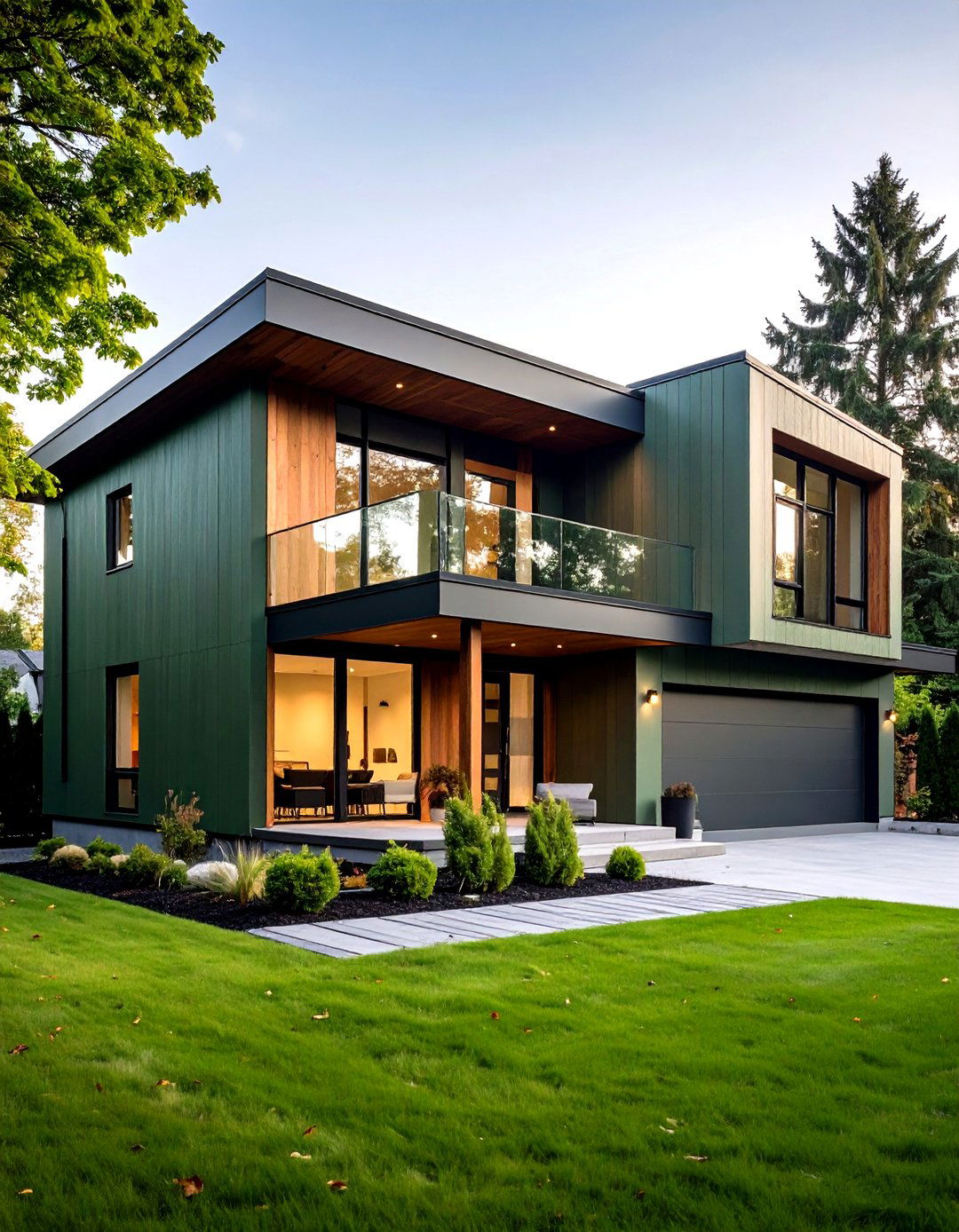
Opt for full-height sage green cladding to unify your facade in a serene, monochromatic palette. Fiber cement or timber cladding painted in a muted green-gray creates a sleek, modern look while providing durability and low maintenance. Mixing horizontal and vertical cladding orientations adds visual interest, breaking up large surfaces without introducing additional colors. This approach works particularly well on minimalist or mid-century modern homes, where clean lines are paramount. Cladding also enhances insulation and weather resistance, making it both a stylistic and practical choice for any climate.
2. Sage Green with Off-White Trim
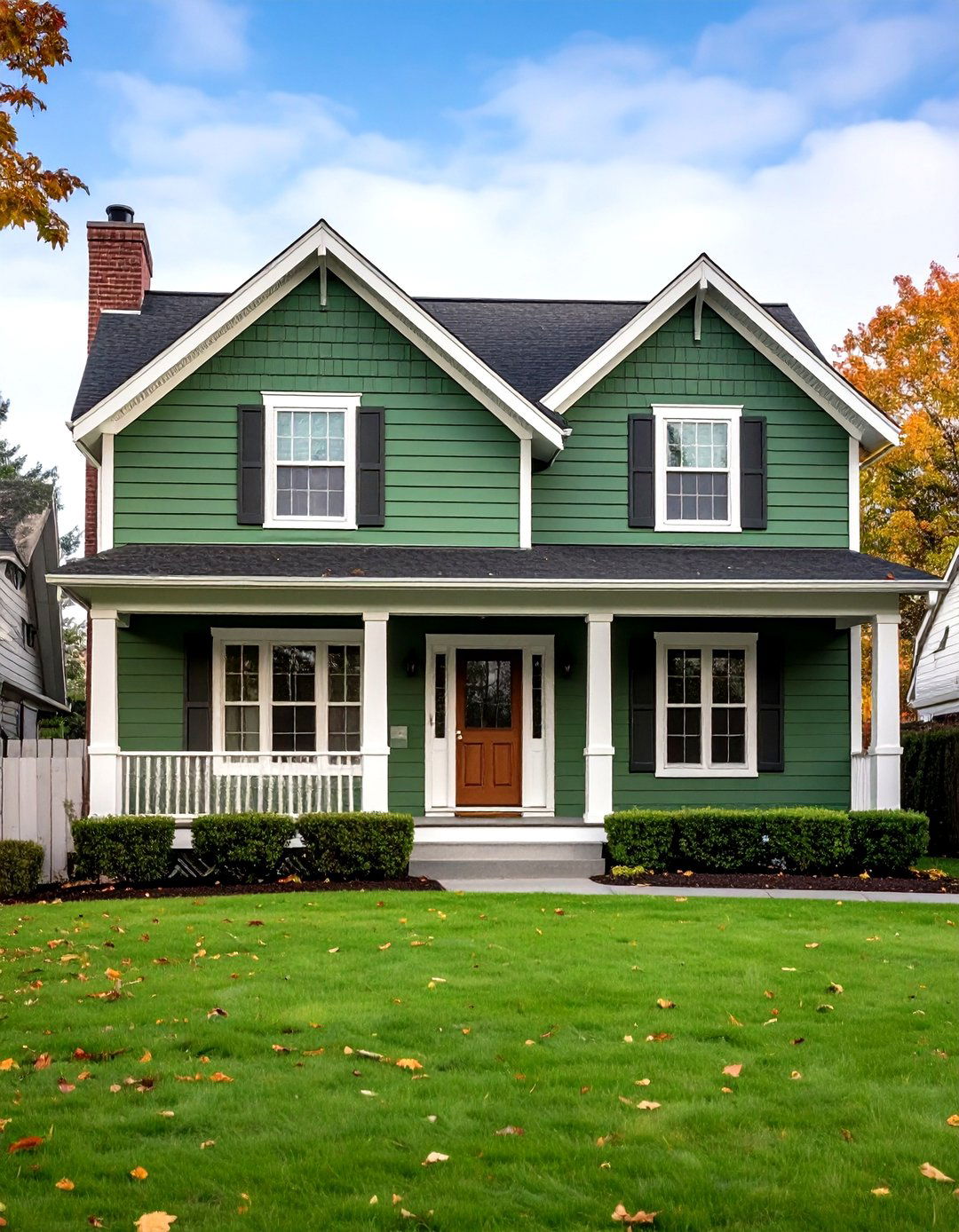
A classic pairing, sage green walls combined with crisp off-white trim create a refined contrast that highlights architectural details like window frames, cornices, and gables. The off-white brightens the muted green, preventing the facade from feeling too heavy, and suits traditional, cottage, or Colonial-style homes. This combination also allows flexibility in accent colors for doors or shutters, as the neutral trim anchors the palette. When choosing paint, look for recipes labeled “sage green” alongside complementary neutrals to ensure harmonious undertones.
3. Pairing Sage Green with Natural Wood Accents

Integrate natural wood elements—such as cedar beams, wooden shutters, or a timber-clad porch—to warm up a sage green exterior. The organic grain of wood contrasts beautifully with the smooth painted surface, adding texture and depth. Over time, cedar and oak develop a silvery patina that further complements the muted green. This combination evokes Craftsman and Scandinavian design sensibilities, creating an inviting, earthy ambiance. Use wood in focal areas like entryways or accent walls to maximize impact without overwhelming the color scheme.
4. Sage Green and Charcoal Gray Contrast
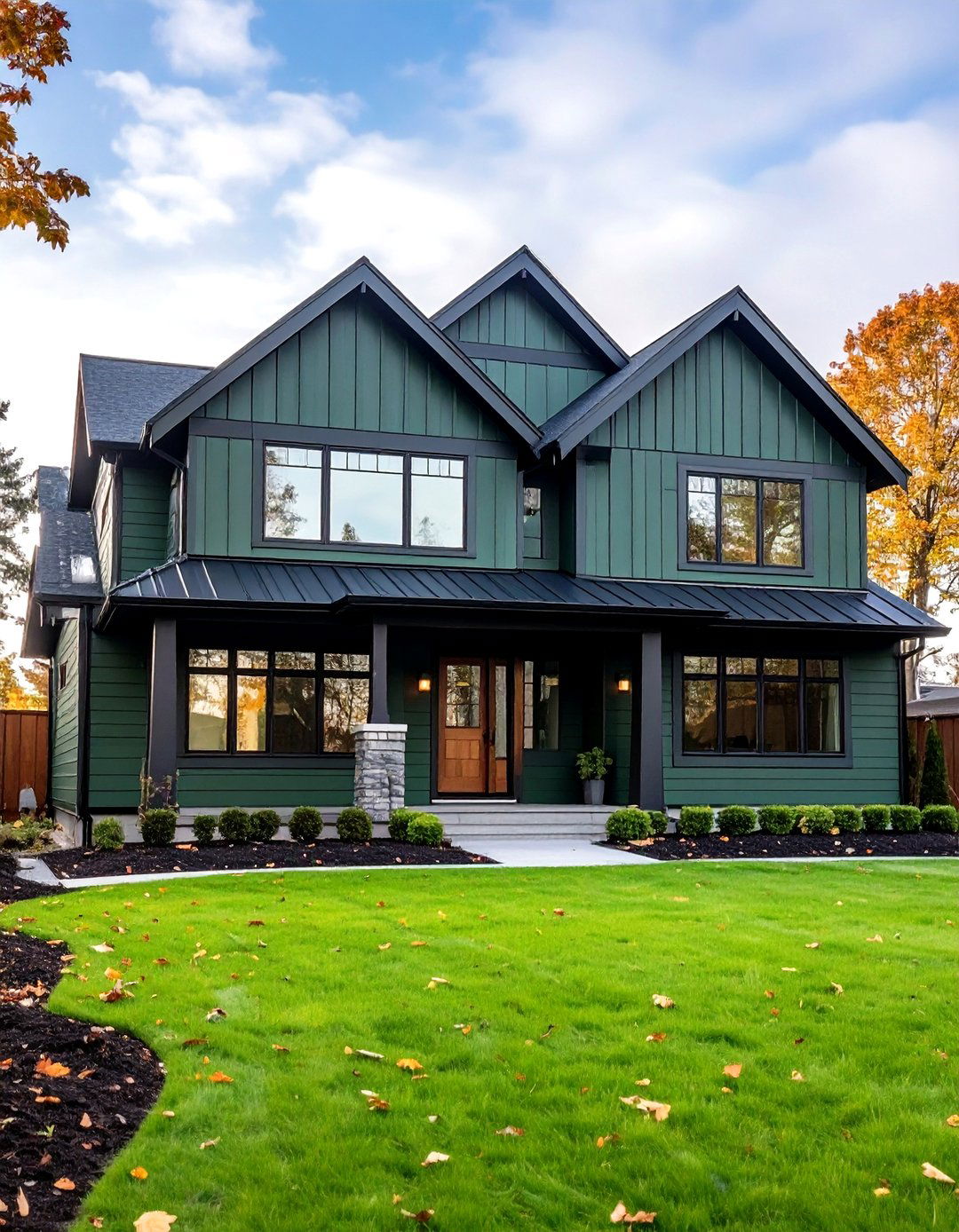
For a modern twist, pair sage green siding with charcoal gray accents on window frames, gutters, and roofing. The deep gray provides a striking contrast, emphasizing the soft green’s warmth and preventing the exterior from appearing too pastel. This palette suits contemporary townhouse developments or urban infills, where bold contrasts highlight sleek geometric forms. To maintain cohesion, repeat charcoal elements in light fixtures or house numbers. This restrained two-tone look balances softness and sophistication for a standout facade.
5. Modern Metal Panels in Sage Hue
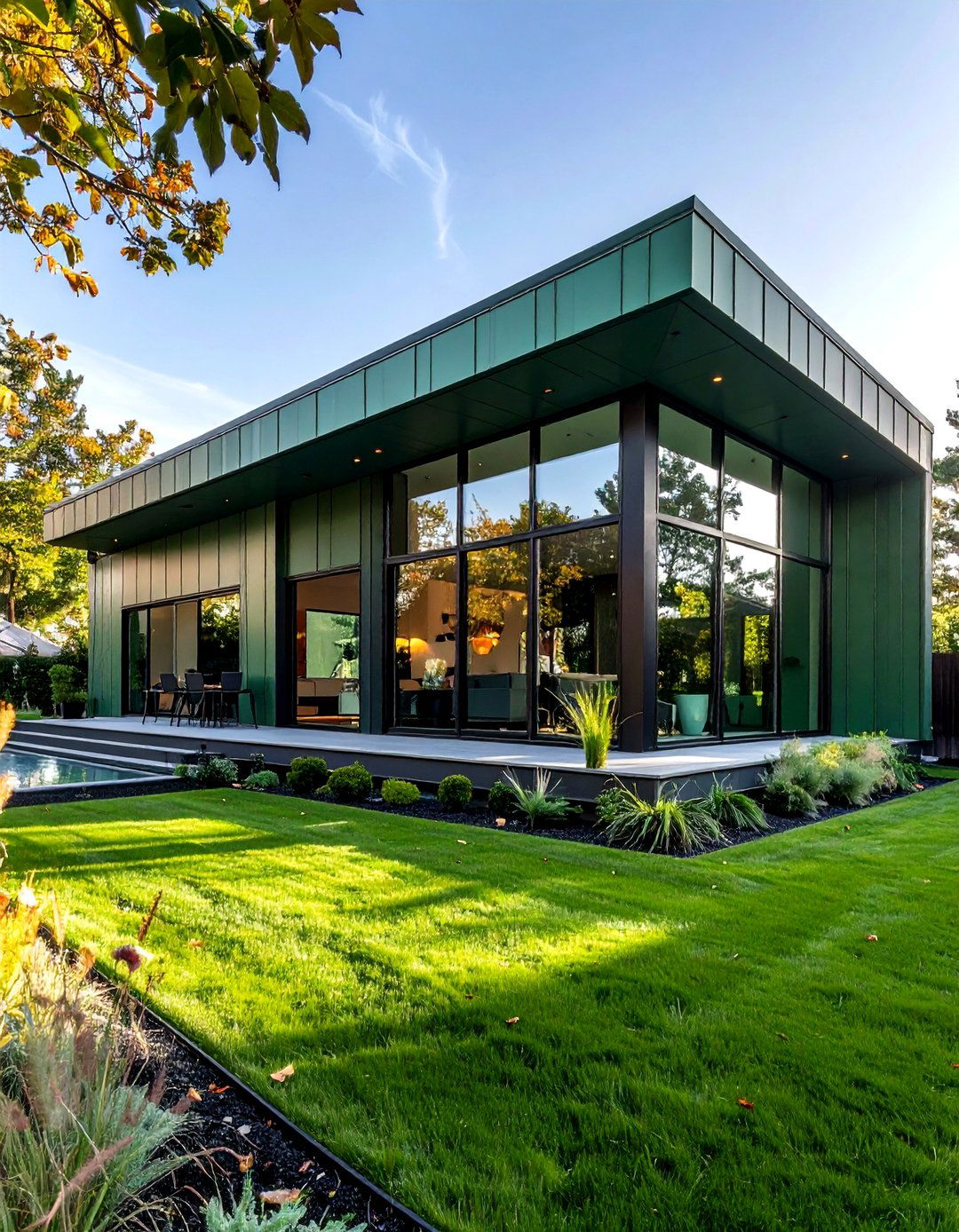
Incorporate metal panels—such as standing seam steel or aluminum—in a sage green finish for a cutting-edge exterior. Metal’s reflective surface picks up environmental light, giving the green a dynamic depth that shifts throughout the day. Combine metal panels with traditional siding materials (e.g., fiber cement) to delineate volumes or highlight entry pavilions. This approach suits industrial loft conversions or ultra-modern homes, where mixed materials convey innovation. Ensure the chosen metal finish is rated for outdoor use to resist fading and corrosion.
6. Sage Green Brickwork Exterior
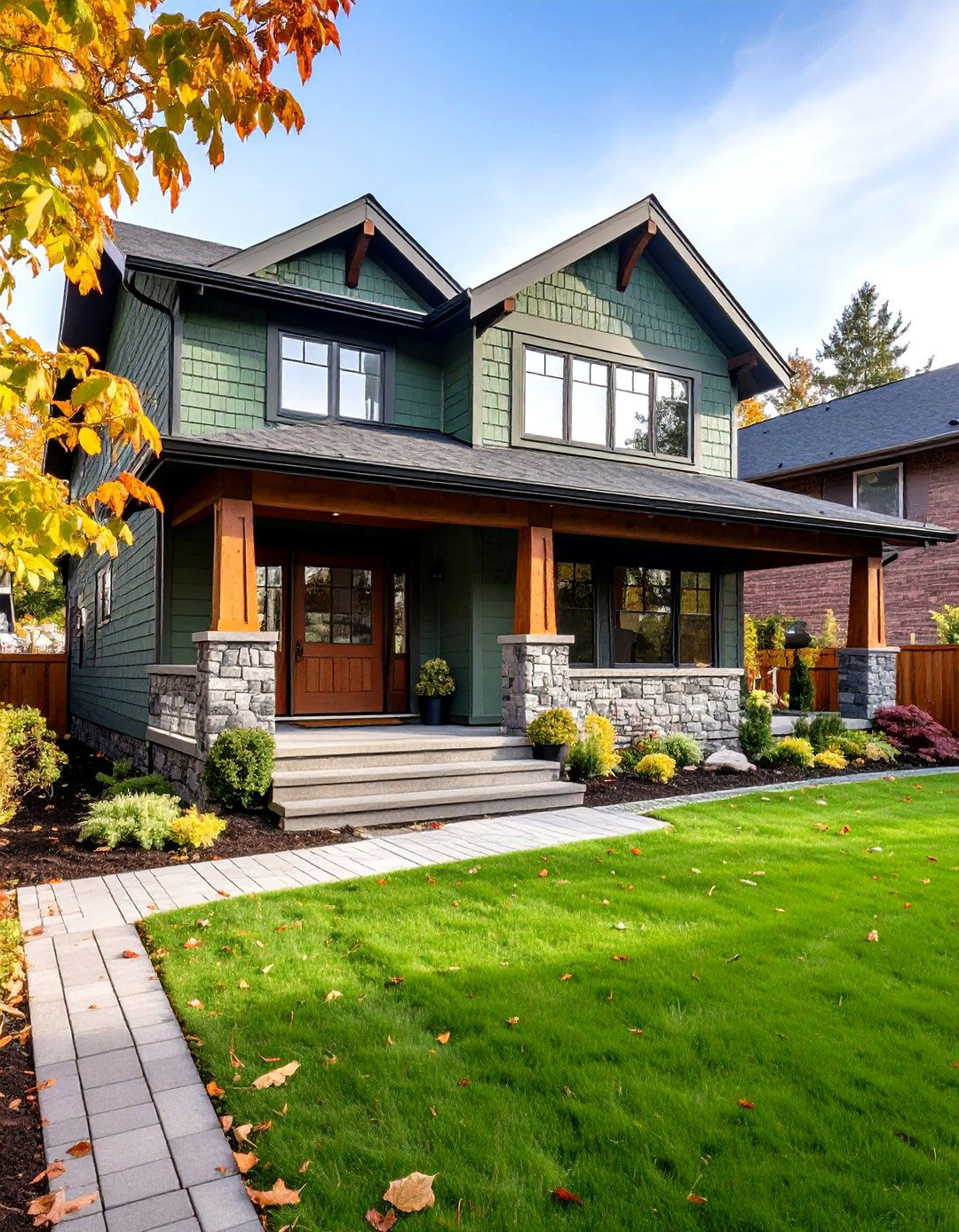
Reimagine brick by painting it in sage green for a unique twist on a classic material. Painted brick retains its textural interest while adopting a contemporary hue. Use a breathable masonry paint to prevent moisture issues and select a mid-tone sage that masks imperfections without looking chalky. Accentuate painted brick with unpainted stone or wood trim for contrast. This technique works well on townhouse facades or cottage bungalows, giving heritage buildings a fresh update without losing structural character.
7. Sage Green Stone and Masonry Features
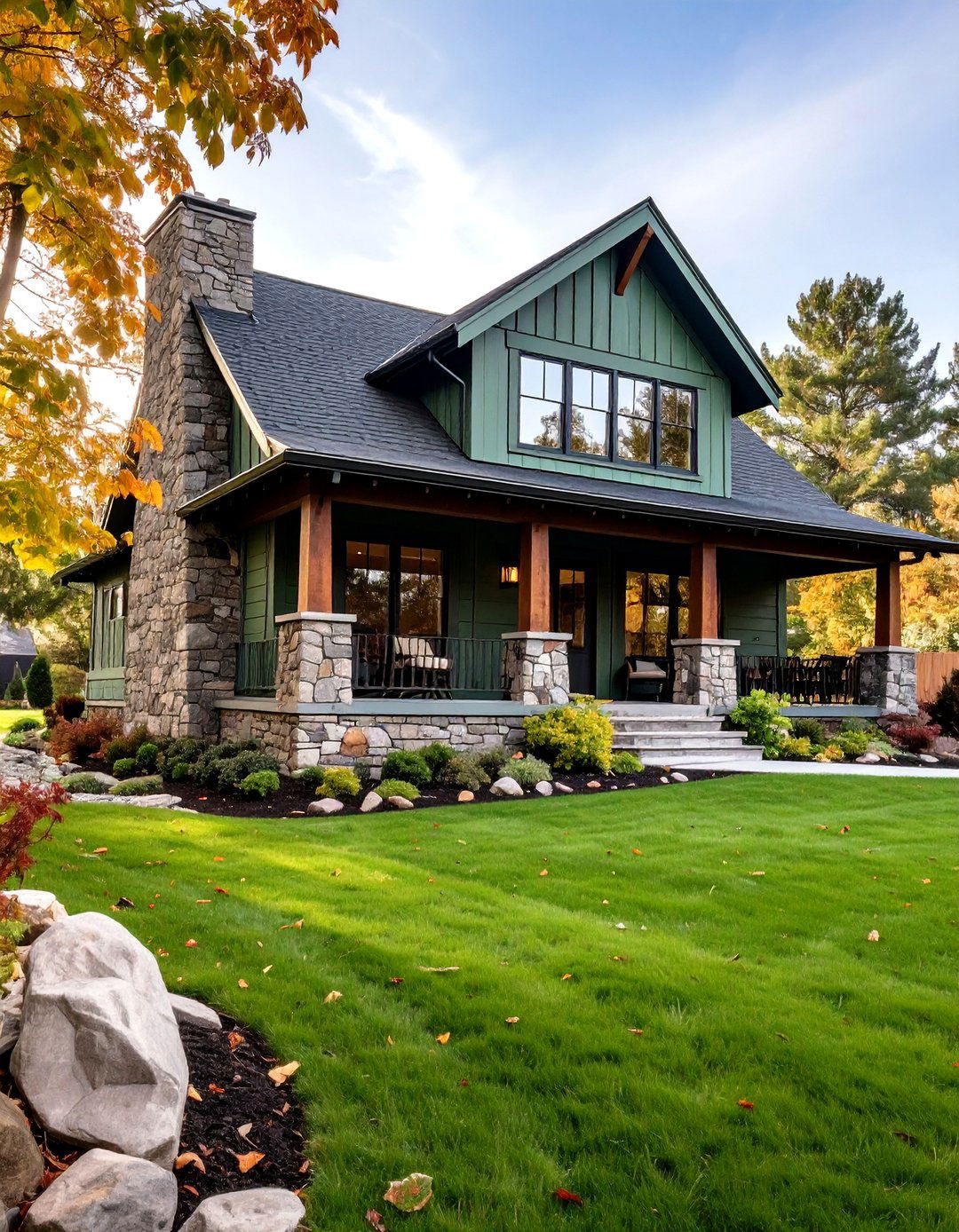
Combine sage green siding with natural stone accents—such as a stone-clad foundation, chimney, or columns—to ground the design. Warm-toned stones like buff limestone or sandstone harmonize with green undertones, creating an organic transition from exterior walls to landscaping. This approach is ideal for rustic cabins or mountain lodges, reinforcing a connection to the surroundings. Keep mortar joints neat and consider varying stone sizes to add handcrafted appeal. The result is a textured, layered facade that celebrates material authenticity.
8. Two-Tone Sage Green Siding
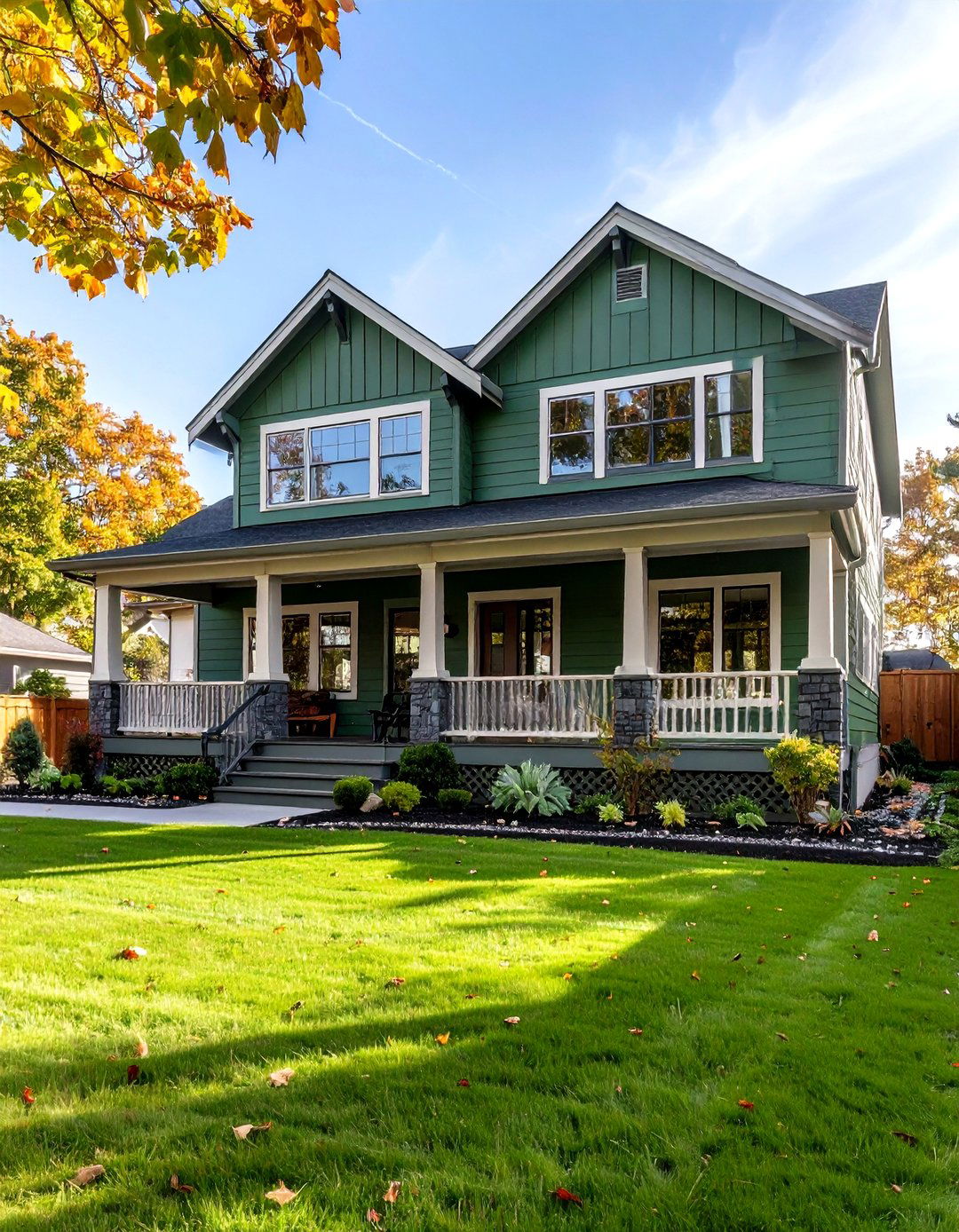
Introduce a secondary sage green shade on specific volumes—like a gable end or upper floor—to create depth. For example, use a darker, richer sage on lower levels and a lighter, silvery sage above. This subtle variation accentuates architectural hierarchy and breaks up large facades without introducing new colors. Two-tone siding works exceptionally on multi-level homes or those with complex rooflines. Coordinate all green shades within the same color family to maintain unity while enhancing dimensionality.
9. Sage Green Front Door Statement
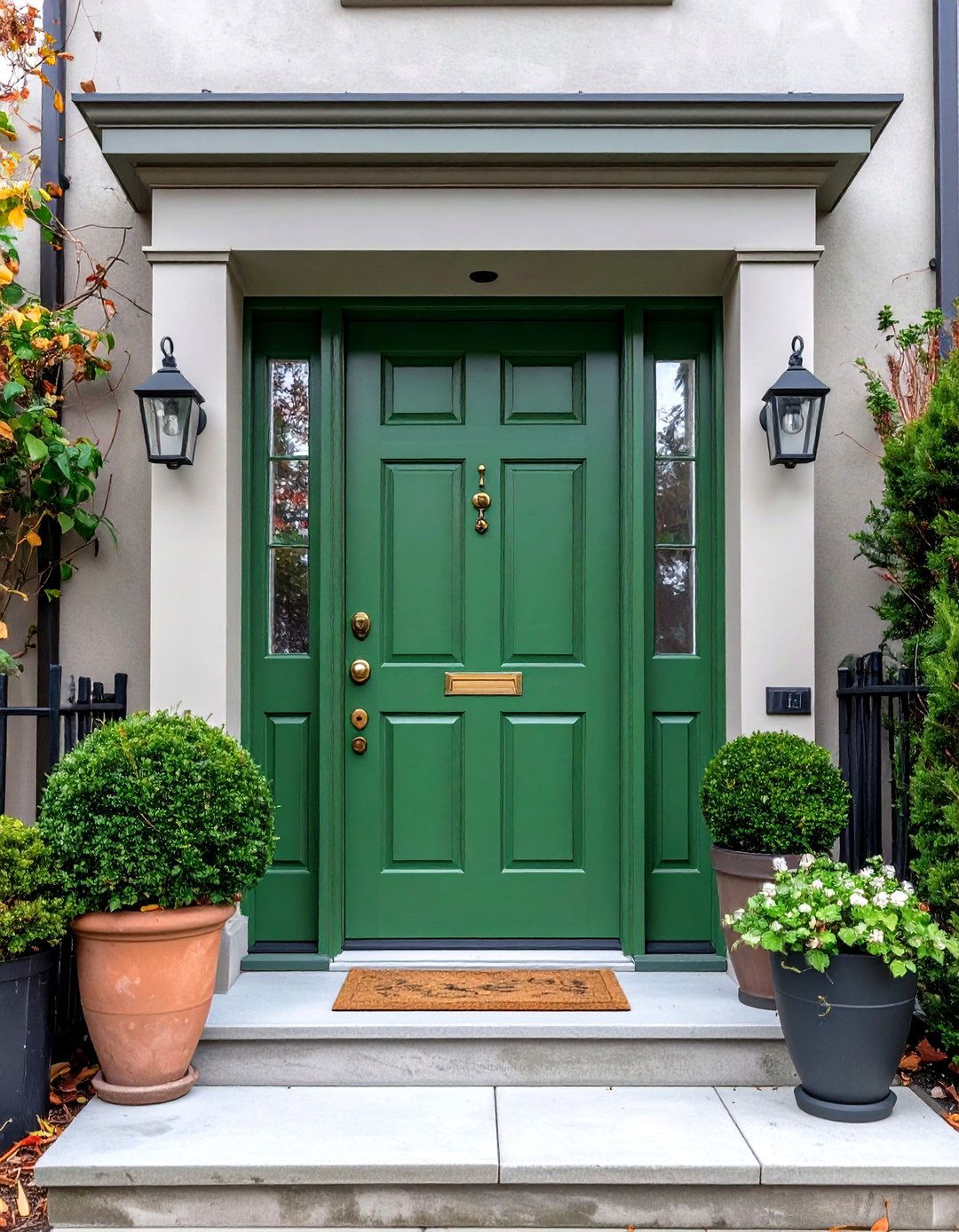
Paint only the front door in a bold sage green while keeping the rest of the facade neutral (white, gray, or natural materials). This pop of color draws the eye to the entrance, creating an inviting focal point. Finished in semi-gloss for added shine, a sage green door can be complemented by matching planters or modest porch furnishings. This tactic suits homes where repainting an entire exterior isn’t feasible—offering high curb appeal with minimal effort.
10. Farmhouse Style with Sage Green Lap Siding
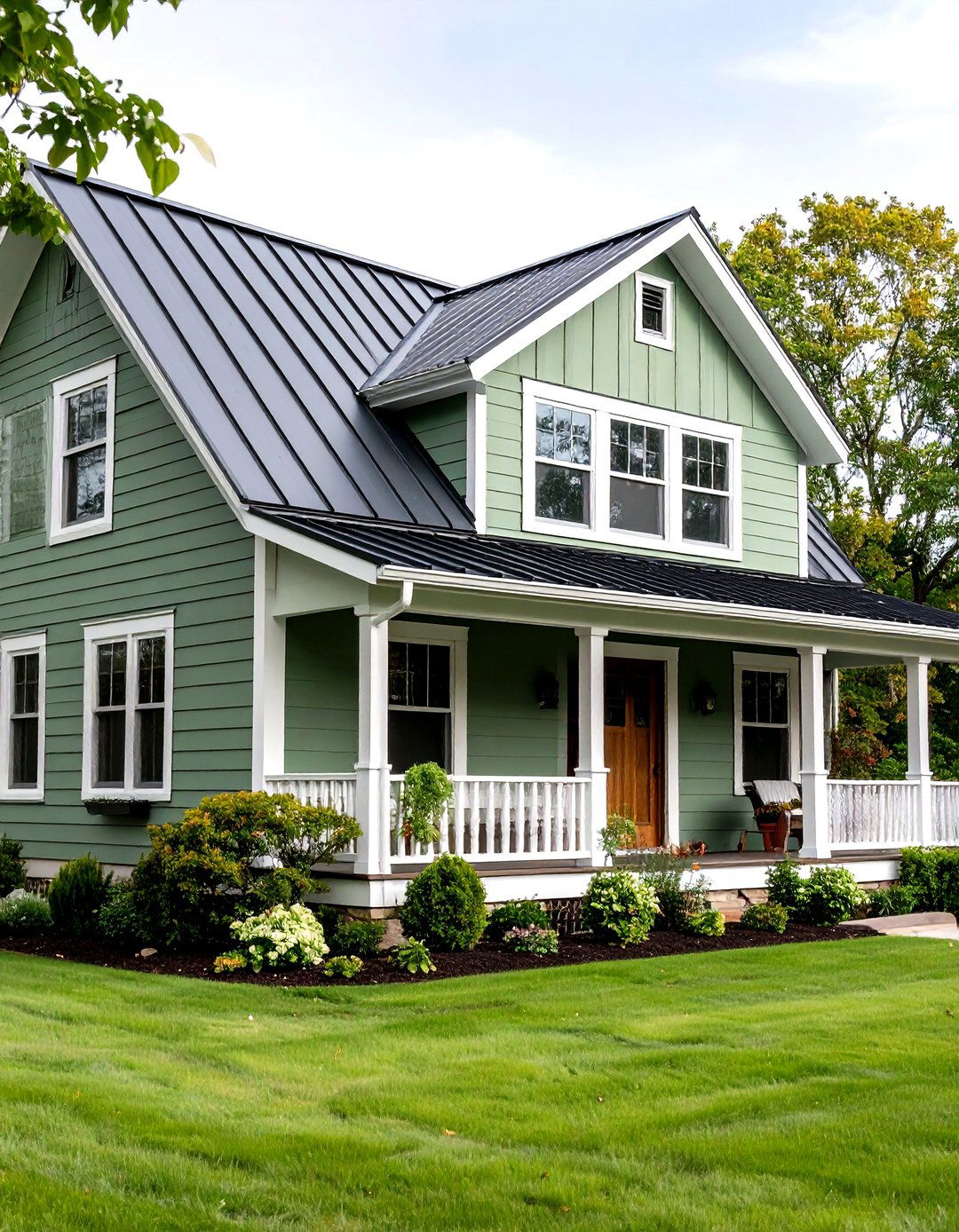
Embrace classic farmhouse charm by choosing horizontal lap siding in sage green paired with white board-and-batten accents on gables or porches. This duo underscores traditional proportions—long lines of siding balanced by vertical trim elements. Extend the green hue to window surrounds and shutters for continuity. Incorporate farmhouse details like exposed rafter tails and a metal roof in dark gray to complete the look. The result is a welcoming, time-honored facade that still feels fresh.
11. Coastal Cottage Sage Green Exterior
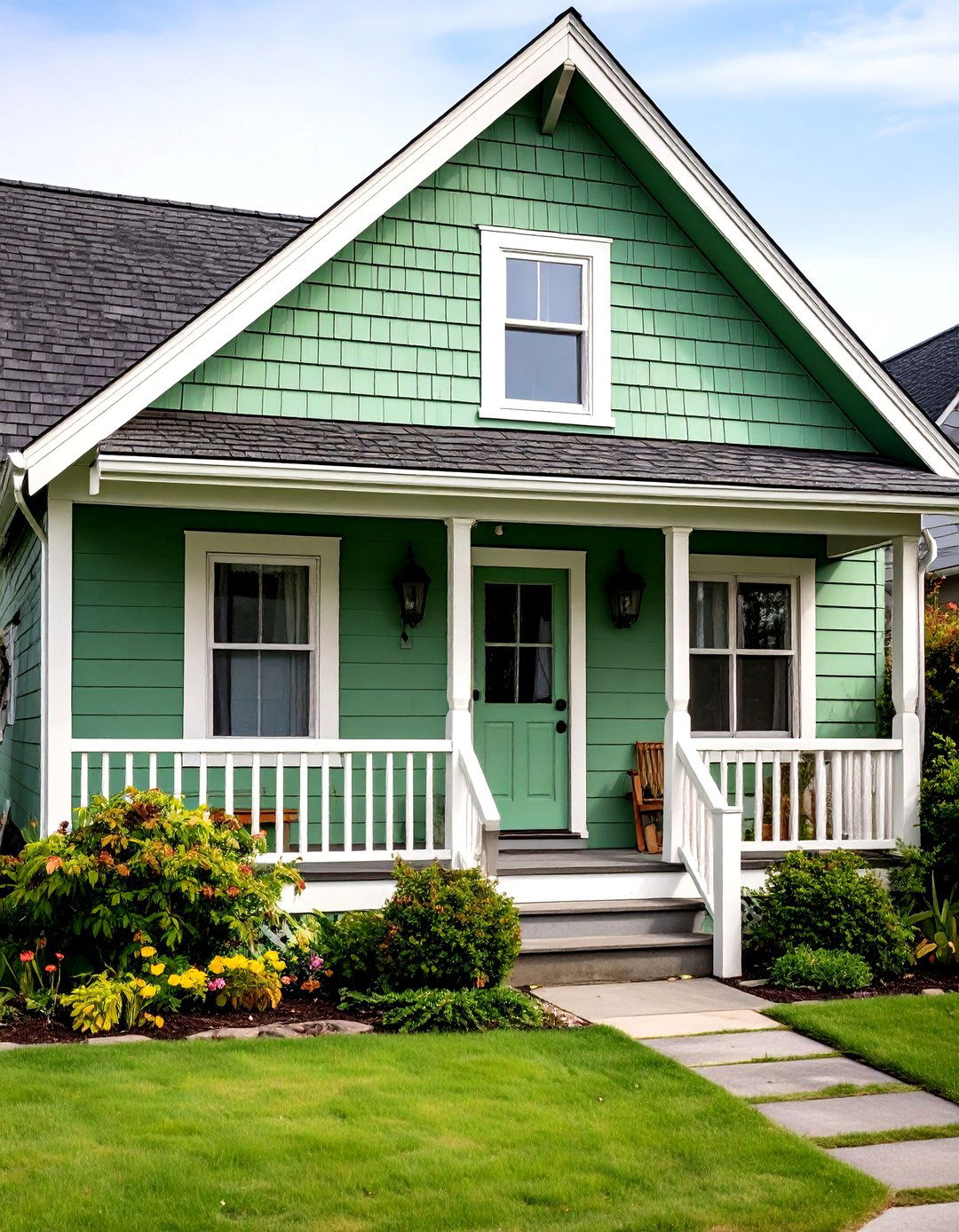
On seaside properties, select a lighter, more silvery sage green to reflect the coastal ambiance. Pair this with bleached wood trim and weathered shingles for an effortlessly nautical vibe. Metal accents in brushed nickel—such as lantern-style lighting—enhance the seaside aesthetic. The palette complements dune grasses, white fencing, and driftwood-inspired landscaping, creating a seamless indoor-outdoor transition. Opt for UV-resistant exterior paint to withstand salty air and sun exposure.
12. Minimalist Monochromatic Sage Facade
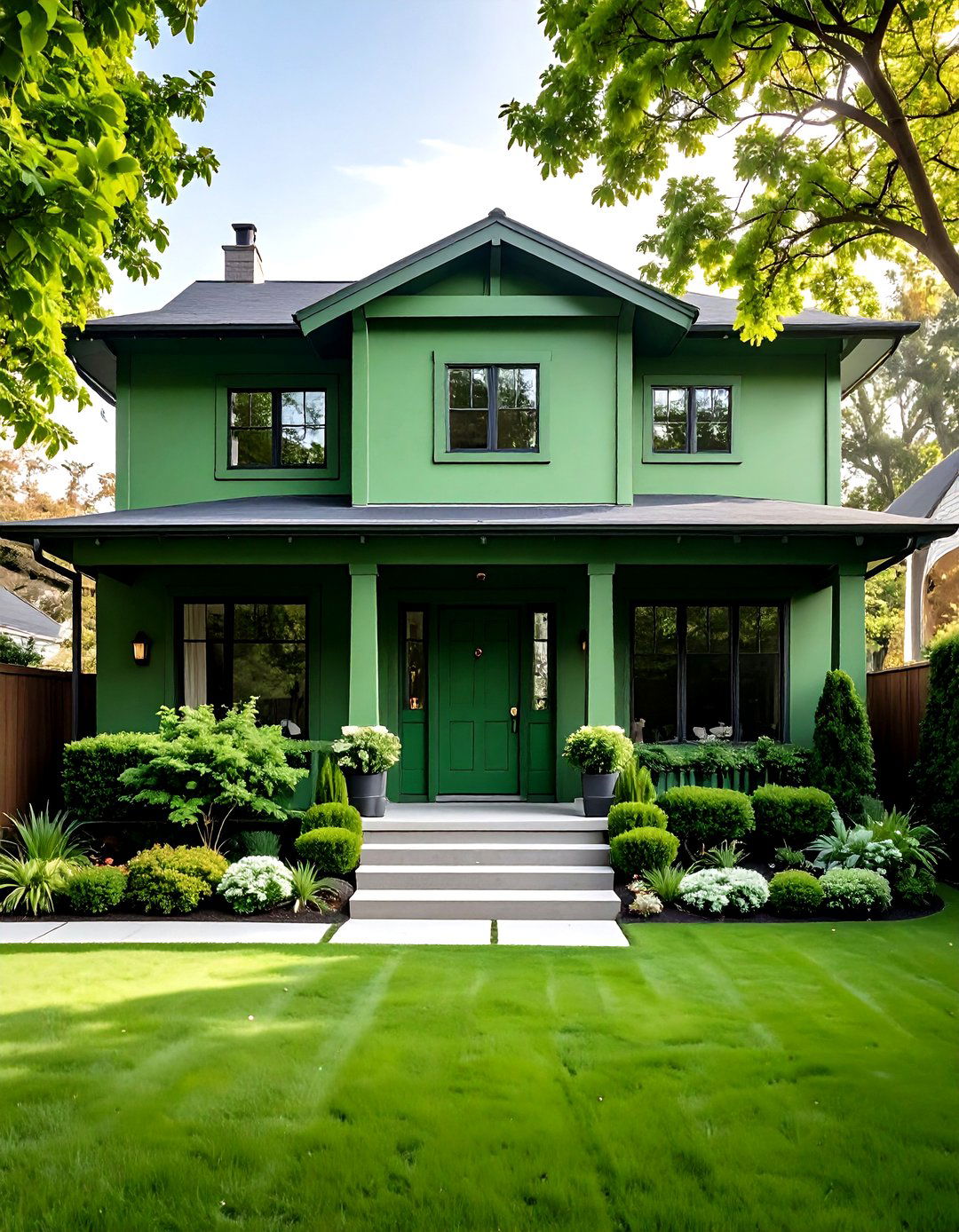
For a truly minimalist expression, paint all exterior elements—walls, trim, doors—in the same sage green tone. This unified treatment emphasizes the home’s form and landscaping rather than individual details. The monochrome approach works best with simple rectangular volumes and flat roofs, where texture and shadow carry the visual interest. Use matte or low-sheen finishes to uphold the minimal aesthetic. To ensure the color doesn’t feel overwhelming, contrast lush green plantings against the facade.
13. Rustic Barn-Inspired Sage Exterior

Channel a barn-like aesthetic by combining sage green board-and-batten siding with exposed wooden barn doors and black metal hardware. The vertical battens accentuate the tall, narrow profile, while the green hue softens the rural motif. Use reclaimed wood for doors or brackets to enhance authenticity. This style suits workshops, guesthouses, or outbuildings but can be adapted to primary residences for a rustic retreat feel. Keep other accents minimal to let the barn form and color speak for themselves.
14. Victorian Revival with Sage Green Paint
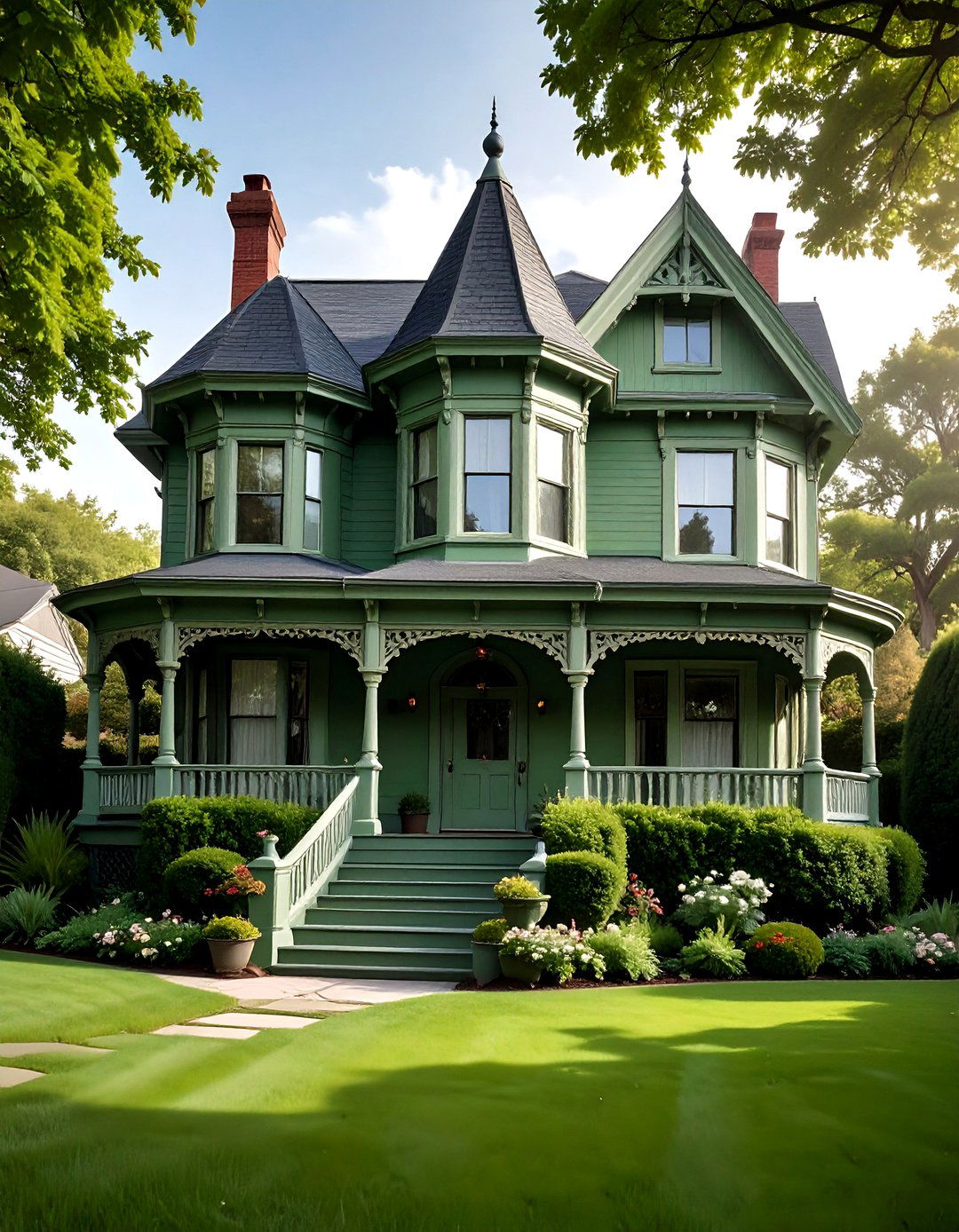
Revitalize a Victorian home by painting its ornate trim in a darker sage green against a lighter sage body. The tonal contrast highlights gingerbread details, brackets, and spindle work. Accentuate bay windows and turrets by reversing the shades—darker on projecting elements, lighter in recesses—to create depth. Pair with brass or pewter hardware for period-appropriate flair. This historically informed palette refreshes a heritage facade while respecting its architectural complexity.
15. Craftsman Bungalow in Sage Green
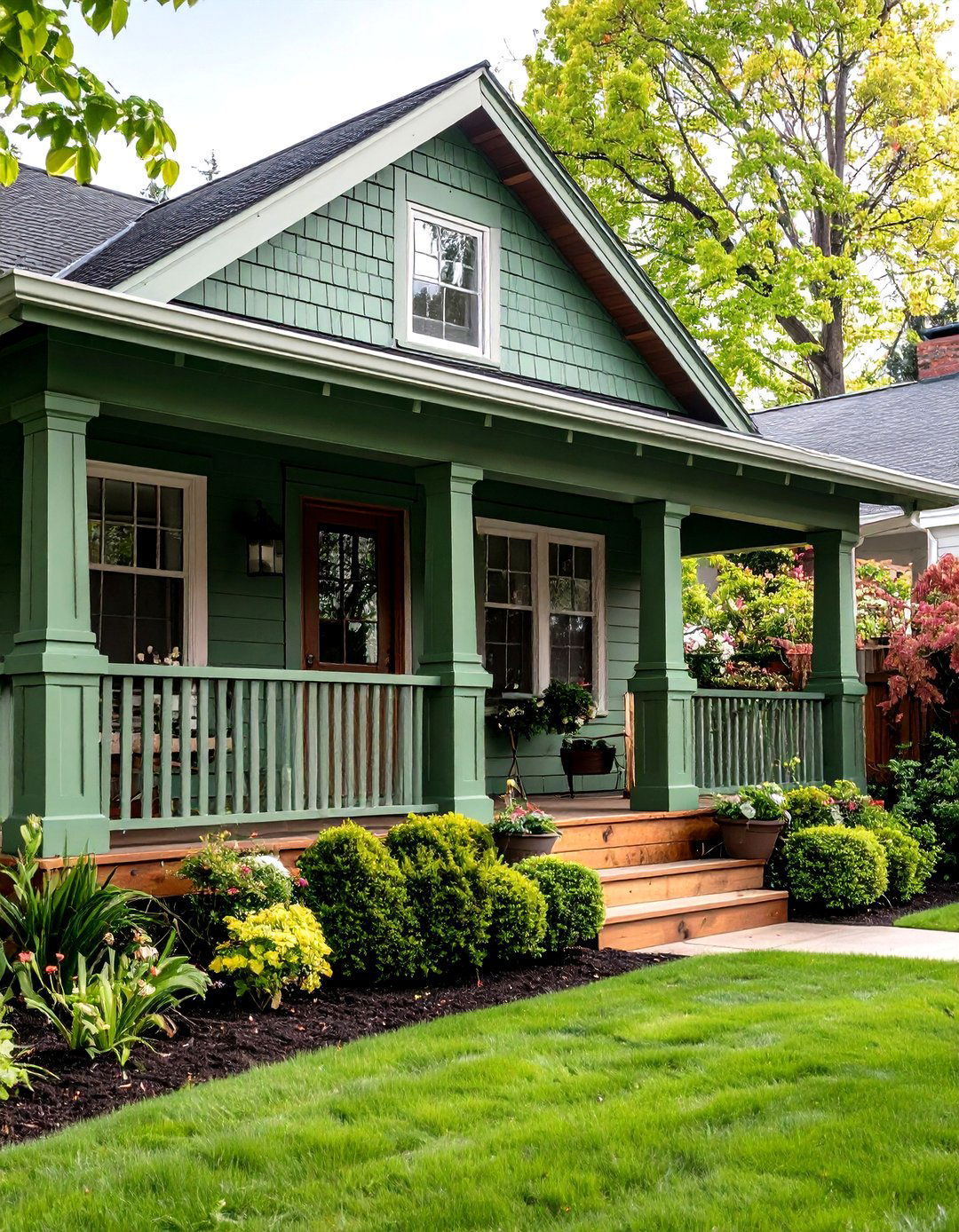
On a Craftsman bungalow, paint wide fascia boards and tapered porch posts in a rich sage green, leaving exposed rafter tails and beams in natural-stained wood. The interplay of painted and natural wood emphasizes craftsmanship. Use the same green for window sashes and doors to tie elements together. This palette complements stone piers on porch supports and low-pitched roofs, reinforcing the handcrafted ethos of Arts and Crafts design.
16. Sage Green with Terracotta Roof Accents
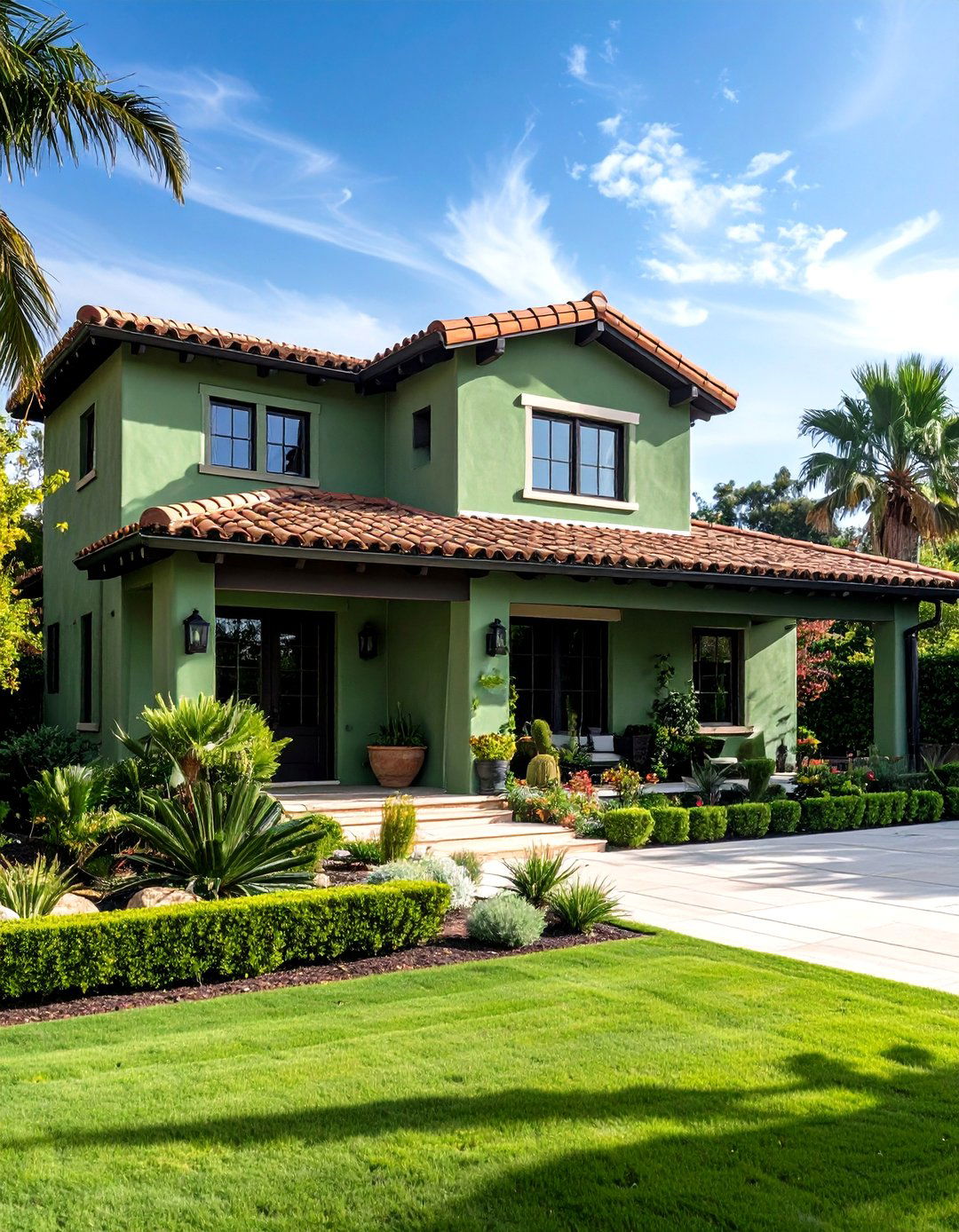
Pair sage green walls with warm terracotta roof tiles for a Mediterranean-inspired facade. The earthy red-orange of the tiles pops against the muted green, creating a sunbaked, Old World charm. Use simple stucco siding or fiber cement to mimic traditional plaster walls. This scheme suits villas and hacienda-style homes. Carry terracotta into planters or patio pavers to weave the palette throughout your exterior spaces.
17. Sage Green Garage Doors and Trim
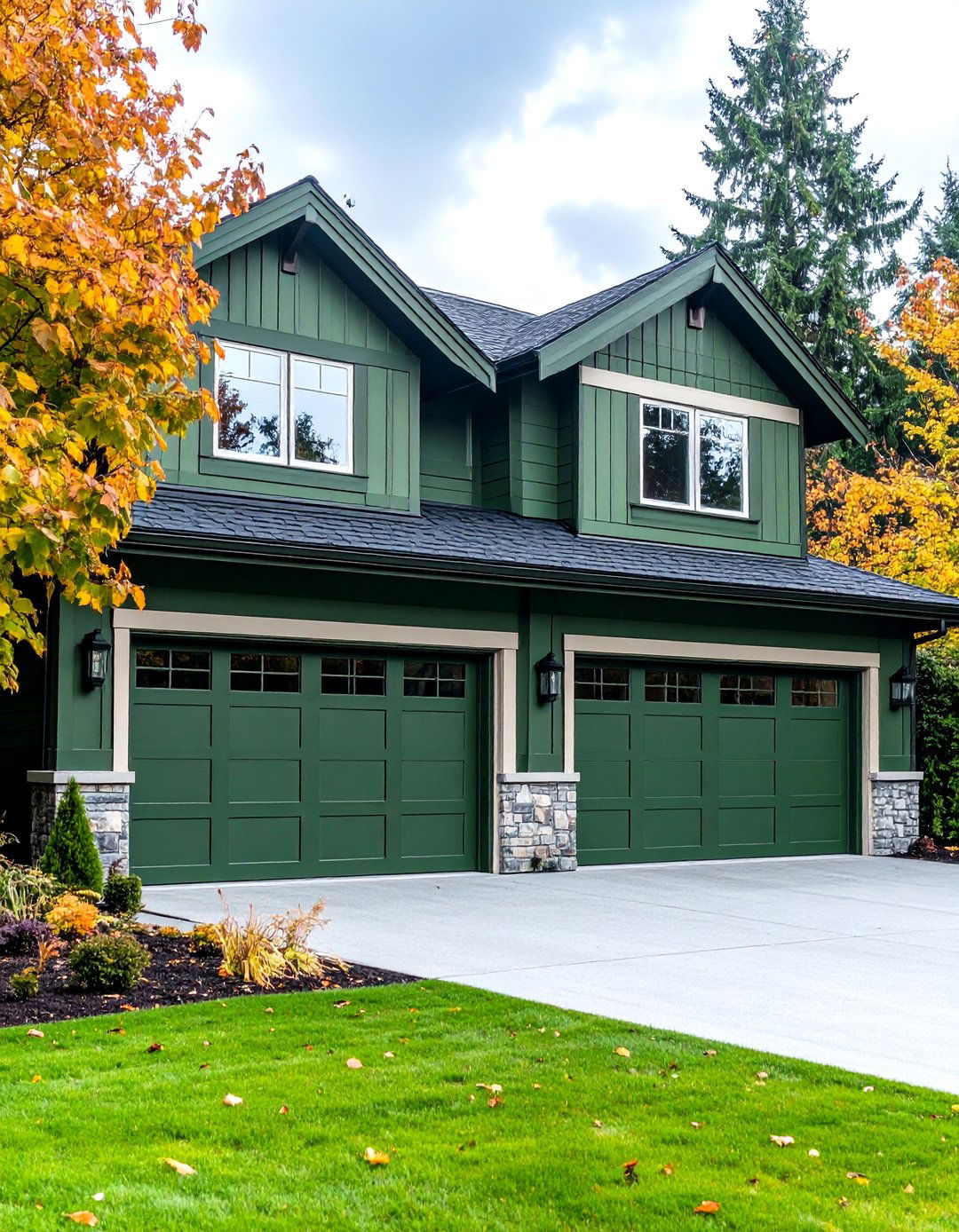
Paint garage doors, window trim, and eaves in sage green while keeping main walls neutral (white, beige, or gray). This selective application adds subtle cohesion without overwhelming the design. Match door hardware and light fixtures to the trim hue for a streamlined look. This approach works well for renovation projects, offering a quick refresh that harmonizes with existing materials and landscaping.
18. Landscaping to Complement Sage Green
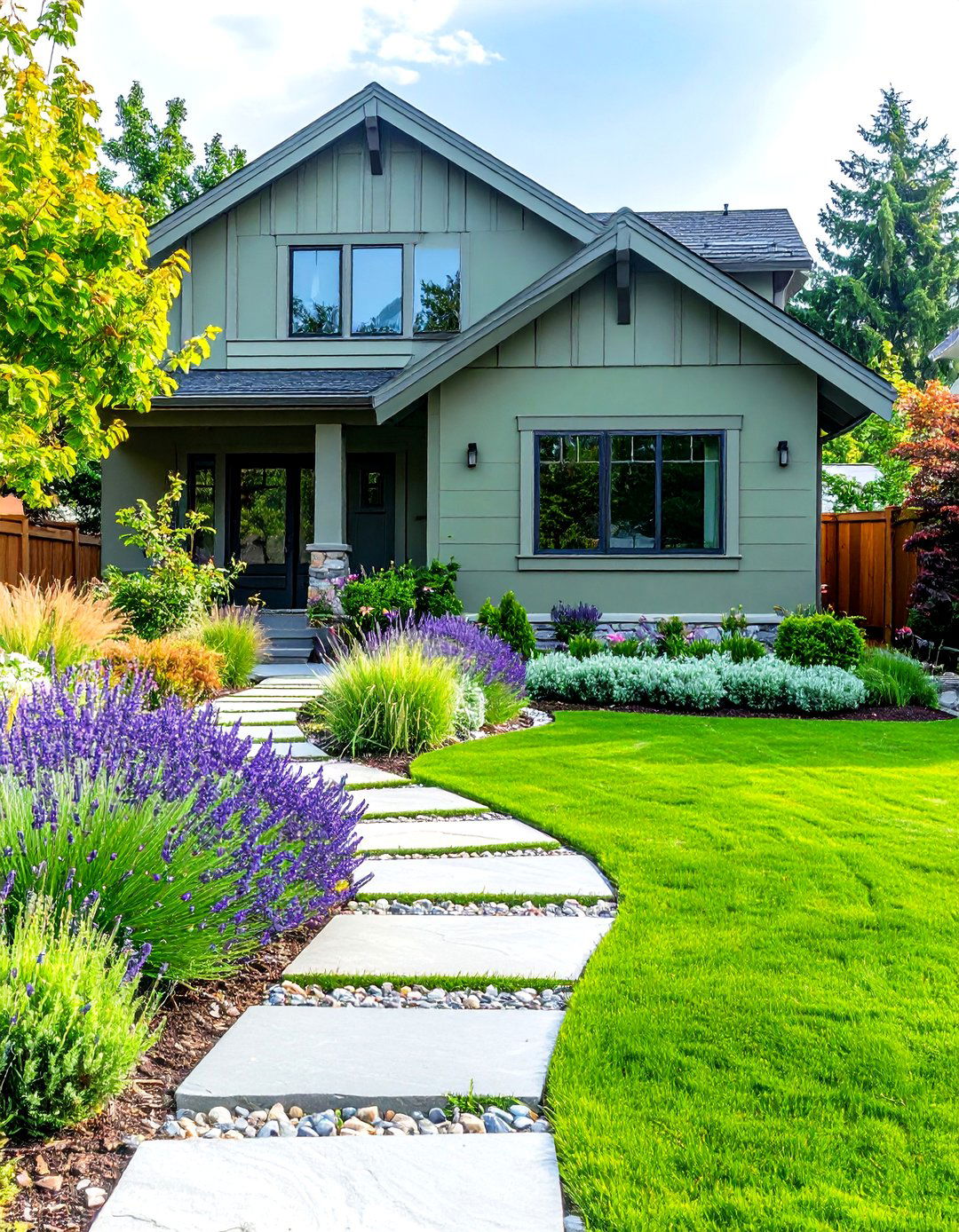
Design landscaping beds with foliage in silvery greens, deep purples, and creamy whites to echo a sage green exterior. Plants like lavender, ornamental grasses, and hostas reinforce the palette and add textural contrast. Incorporate natural stone pathways and wood edging to ground the beds. Uplighting on select shrubs can dramatize the facade at night, highlighting the sage paint’s subtle undertones.
19. Sage Green and Black Window Frames
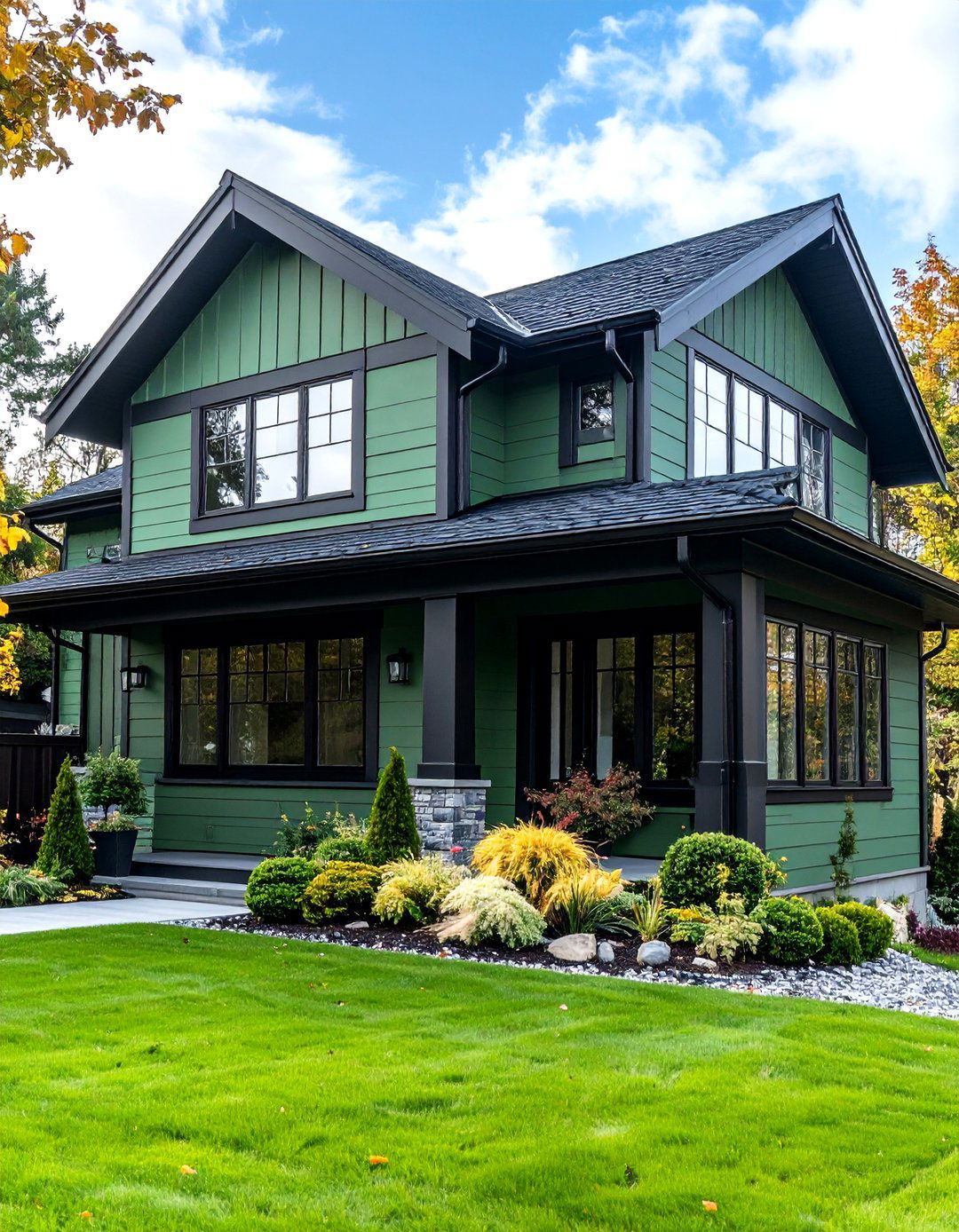
Enhance architectural definition by painting window frames and mullions in matte black against a sage green backdrop. The sharp contrast pinpoints each opening, creating a graphic, modern effect. Black gutters and downspouts complete the look. This bold accent is ideal for mixed-material facades, where metal, glass, and painted wood converge in contemporary designs.
20. Sage Green and Soft Pastel Accents
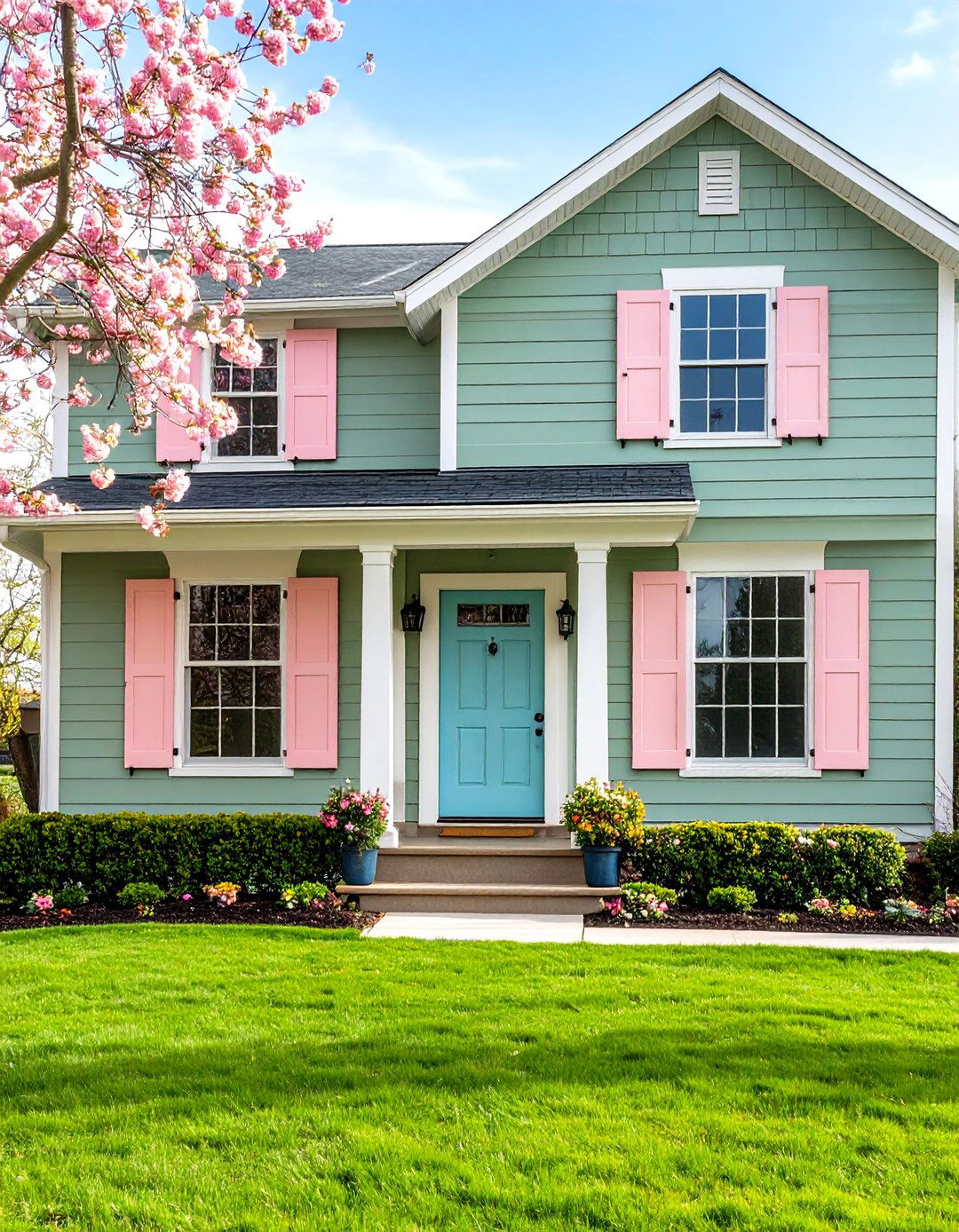
Soften a sage exterior with accents in pastel hues—blush pink shutters, powder blue doors, or pale yellow planters. These unexpected pops introduce whimsy and warmth, evoking English cottage gardens. Limit pastel use to focal points to avoid diluting the main color’s impact. This playful approach transforms a serene sage canvas into a charming, storybook facade.
Conclusion:
From sleek contemporary cladding to cozy cottage charm, sage green proves itself as an endlessly adaptable exterior hue. Whether used in a monochrome minimalist scheme or paired with contrasting trims, natural wood, and stone features, sage green enhances architectural form and harmonizes with diverse settings. These 20 ideas illustrate how strategic material choices, accent colors, and landscaping can elevate a home’s curb appeal, ensuring a timeless yet fresh facade that stands out with subtle elegance.


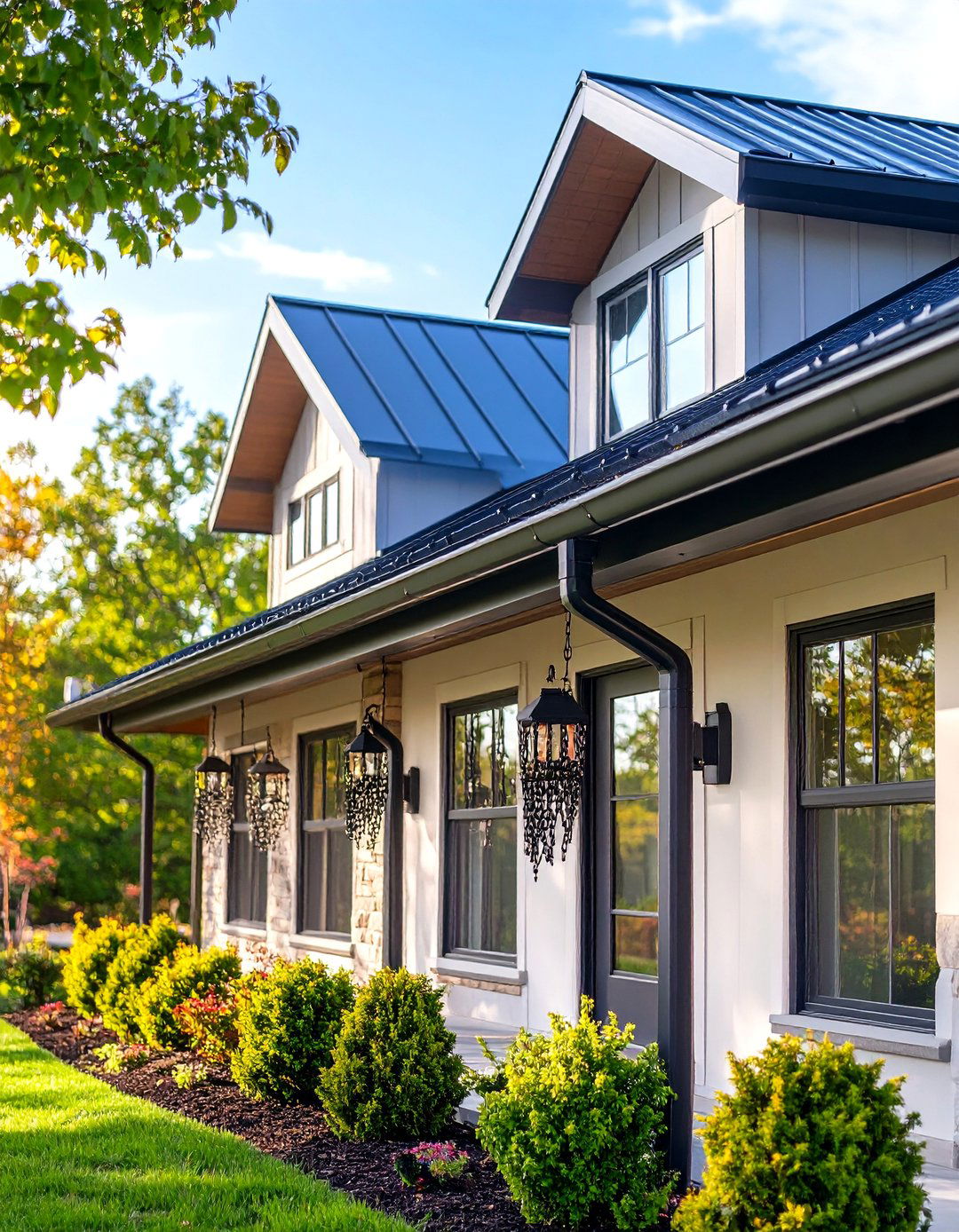
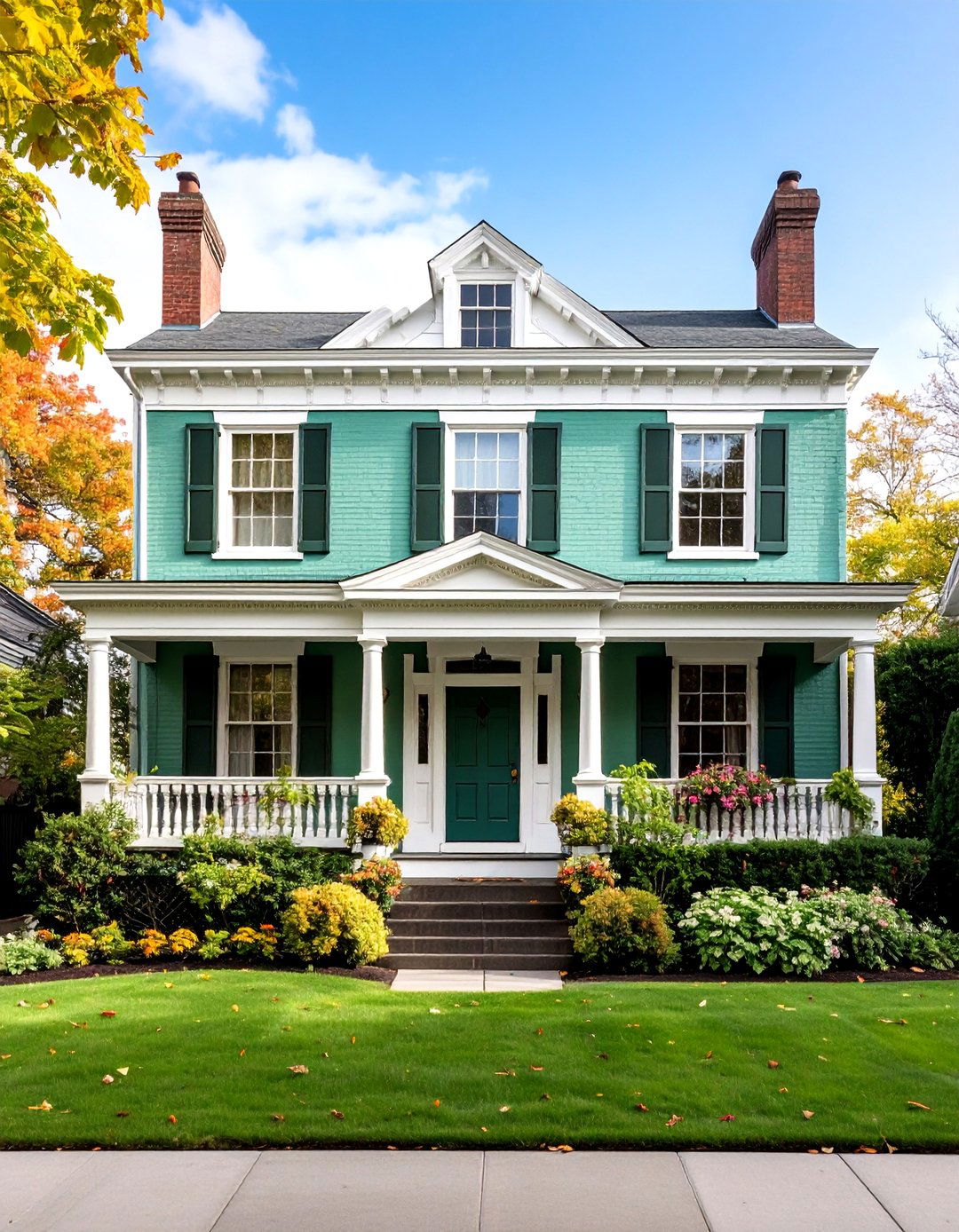
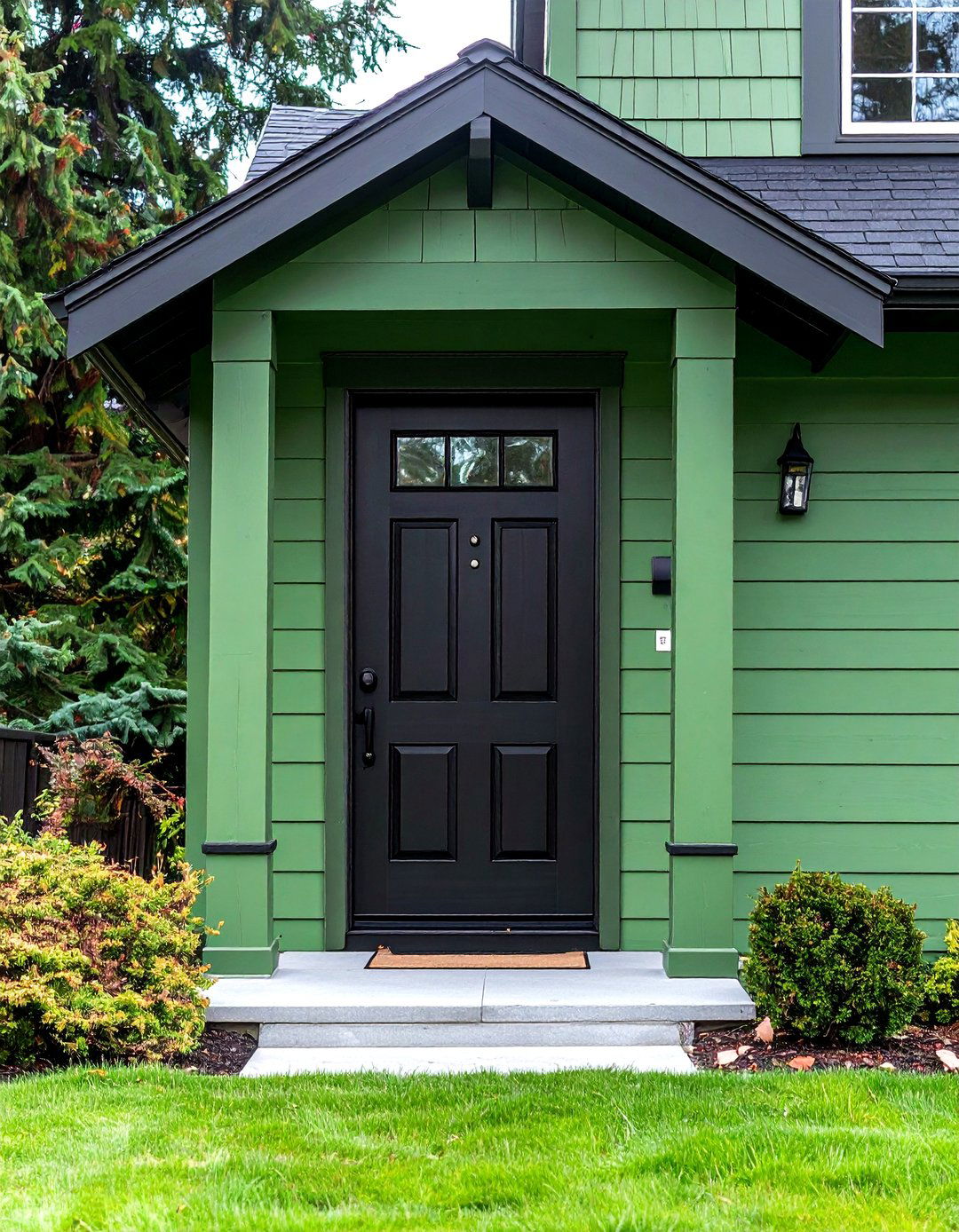
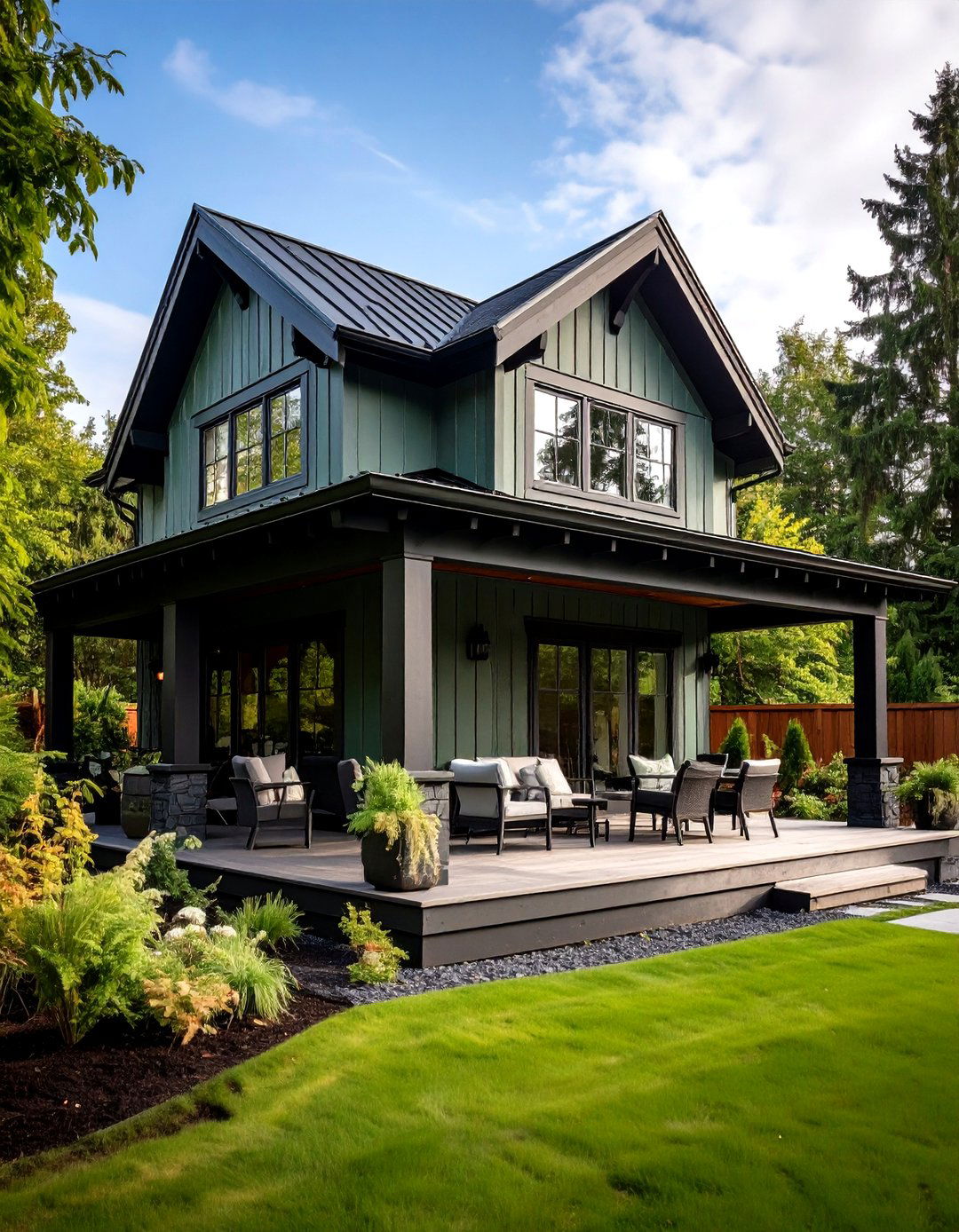
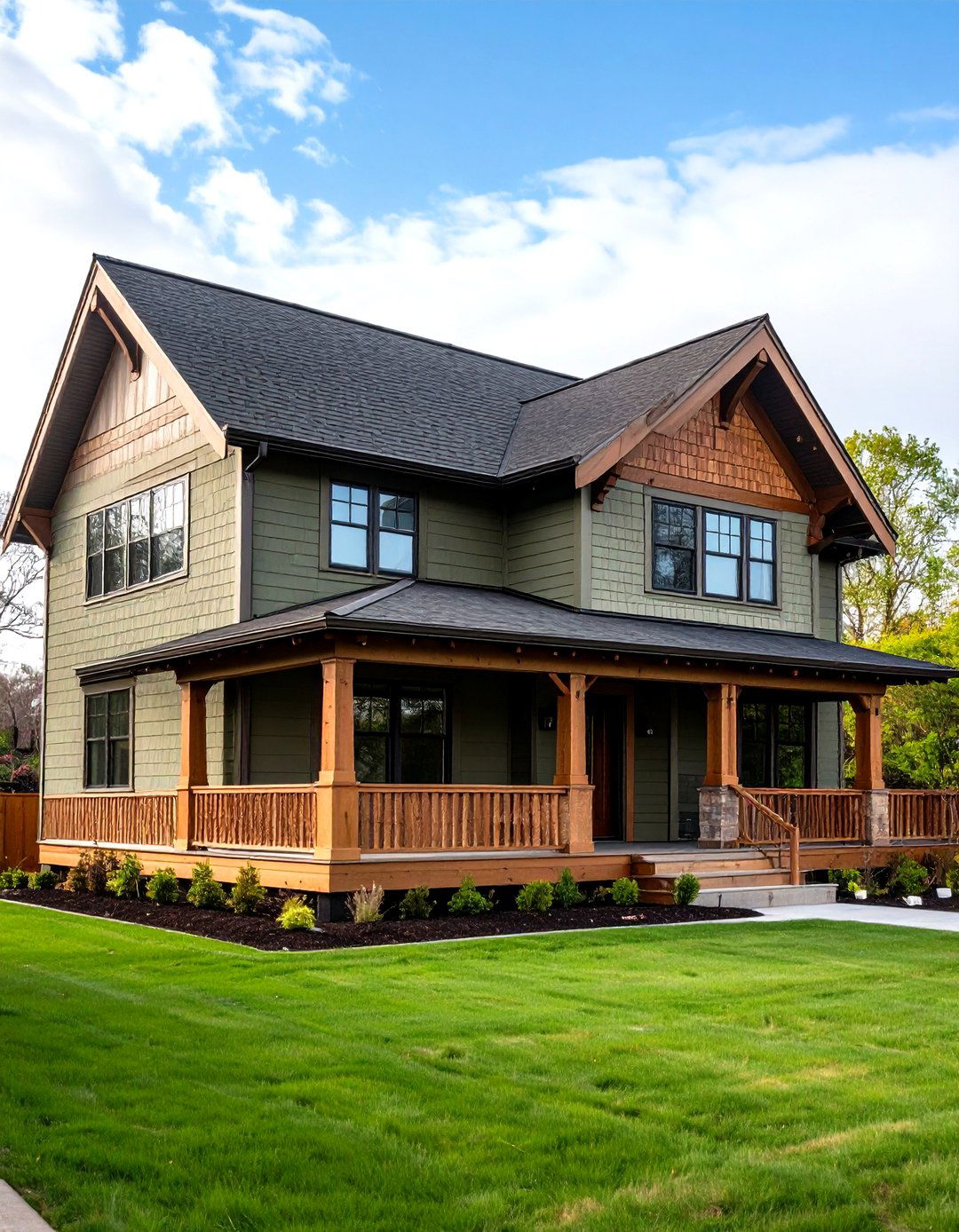
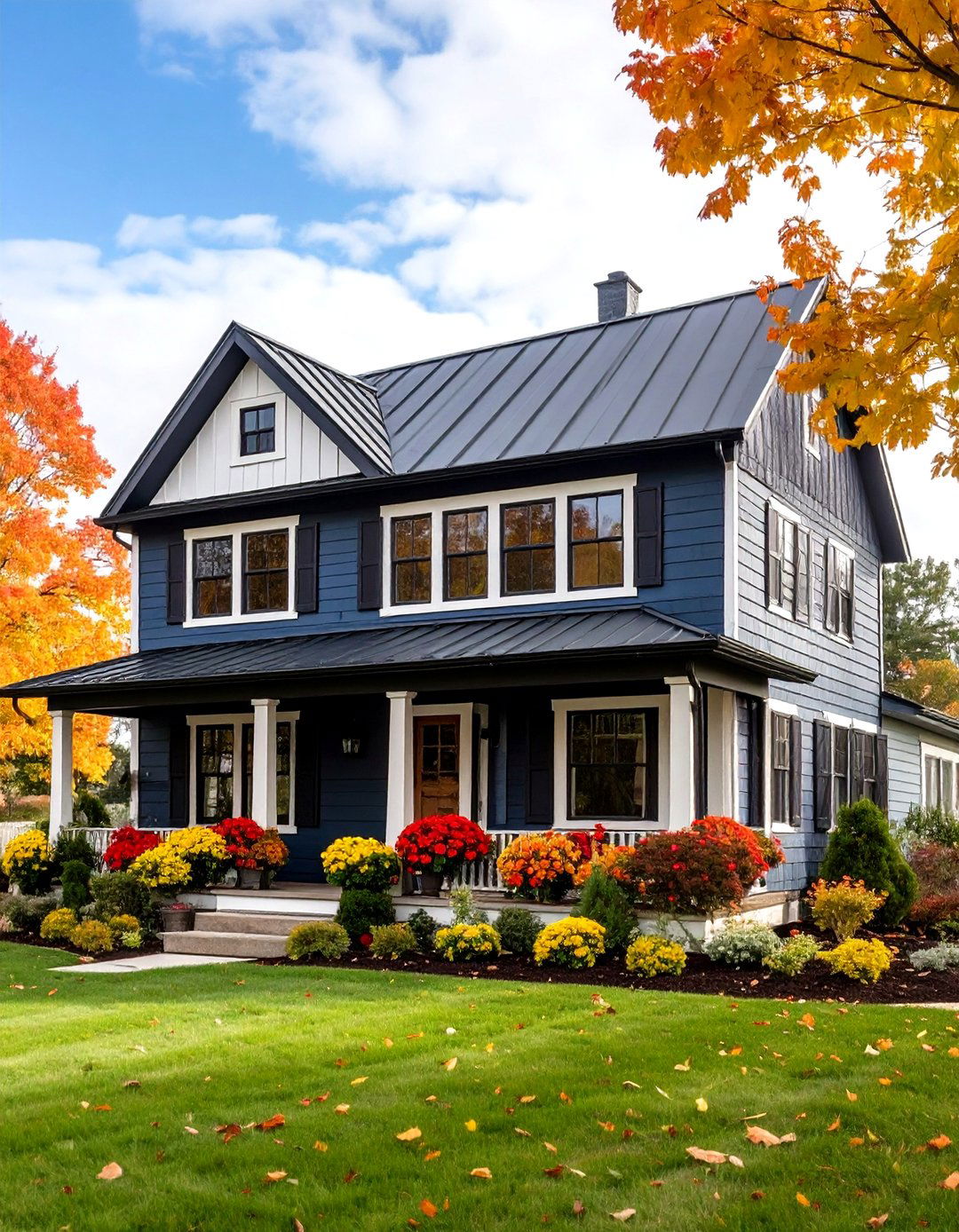
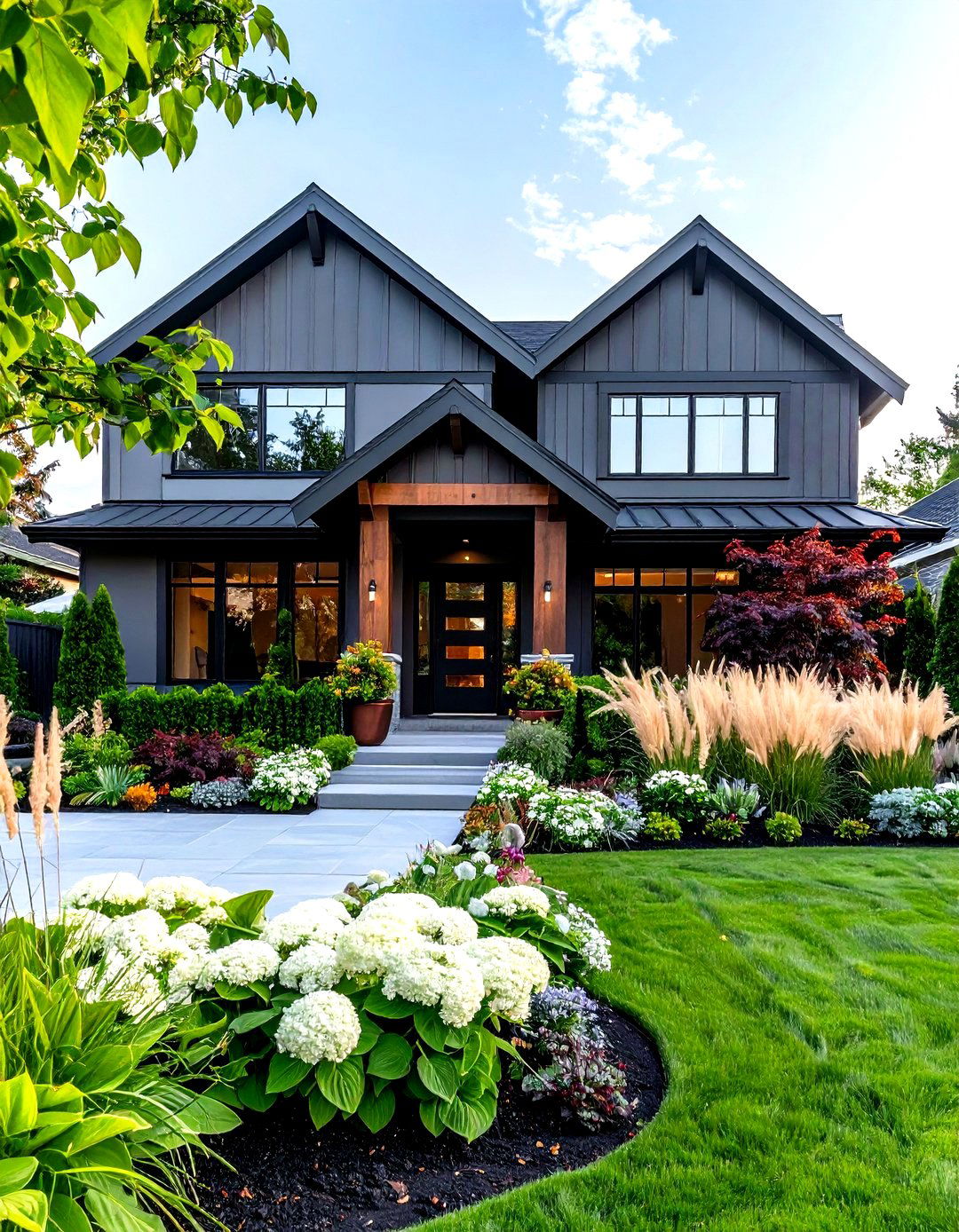
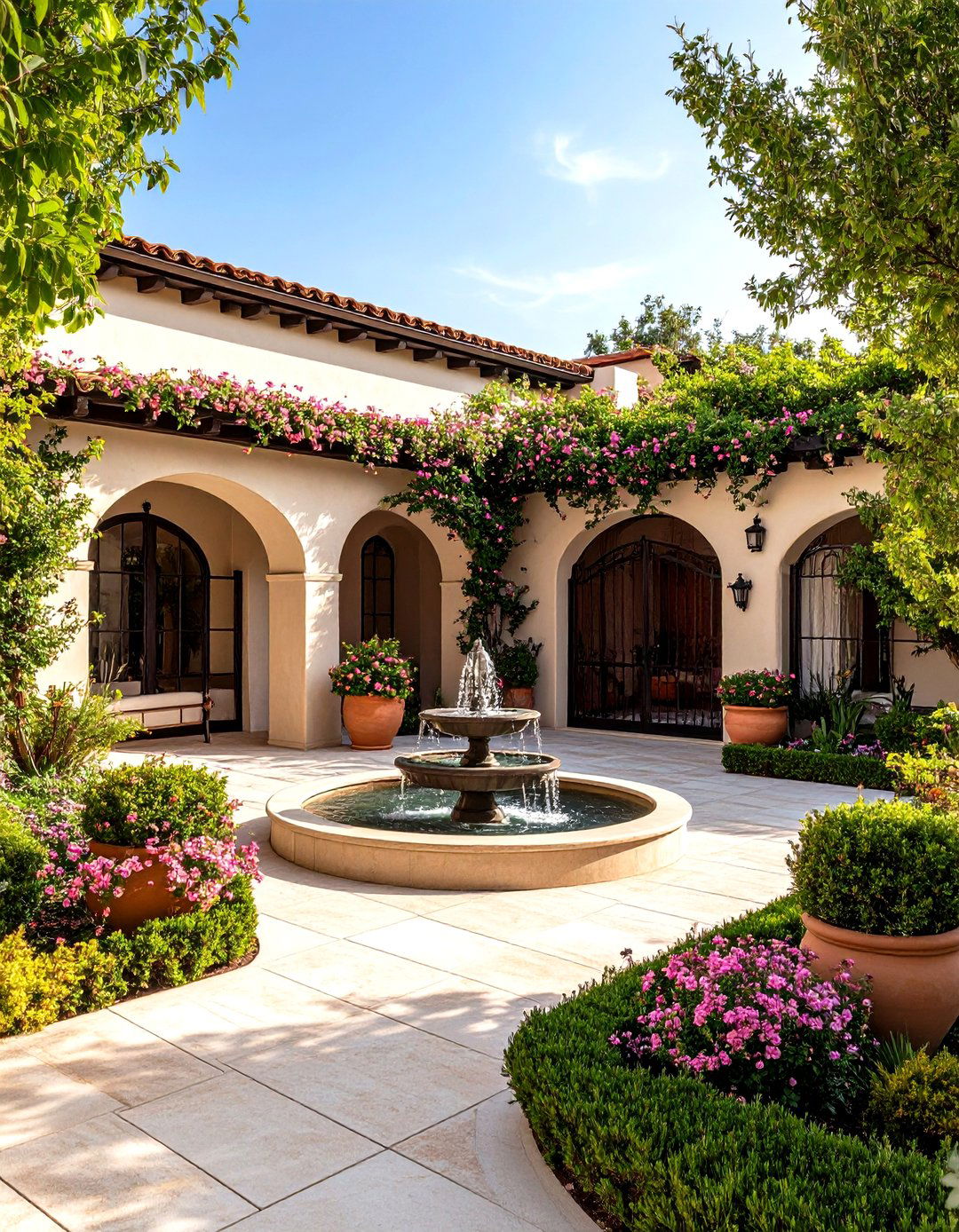



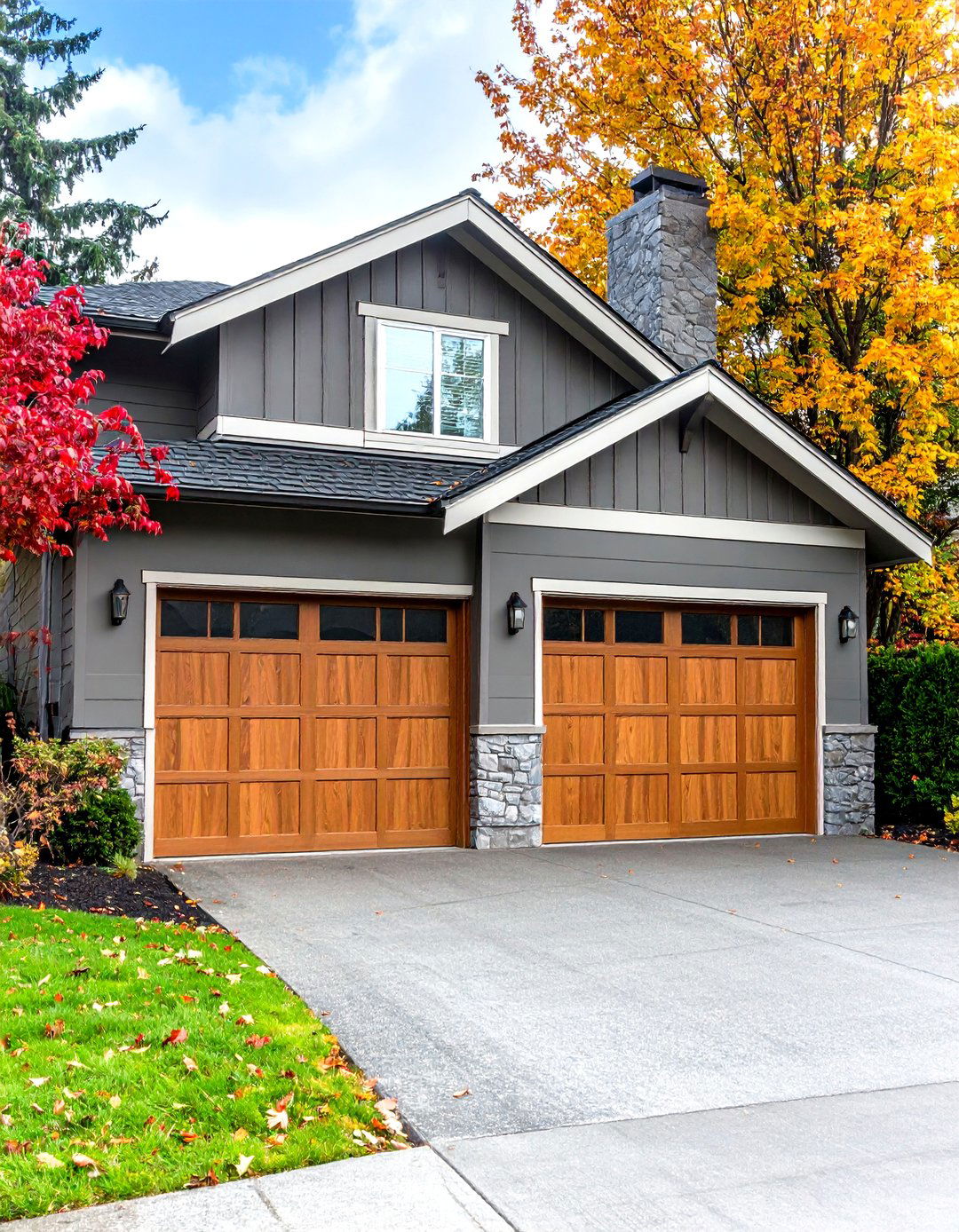
Leave a Reply